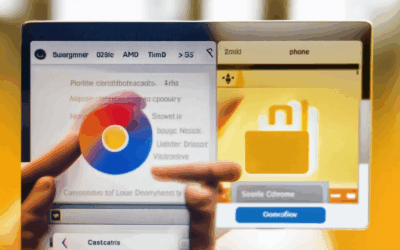In today’s connected world, the internet offers endless opportunities for learning, creativity, and social interaction, but it also poses unique challenges. For parents, ensuring their children navigate this vast digital landscape safely and responsibly is a top priority. While the internet can be a powerful tool for empowerment, it’s crucial to address the growing concerns around internet privacy for kids. From understanding when and how to restrict access to exploring effective ways to protect their children’s privacy online, parents need practical guidance to help their kids stay safe and confident. Whether it’s equipping them with essential Internet safety for kids skills or implementing the right parental control measures, this guide provides actionable strategies to empower your children to thrive in the digital age while safeguarding their personal information and well-being.

Should I Restrict My Child’s Internet Access?
Deciding whether to restrict your child’s internet access involves balancing their safety with their need to explore and connect online. Here’s a structured approach to help you make an informed decision:
Understanding the Risks and Benefits
The internet offers vast educational resources and opportunities for social interaction, but it also poses risks like exposure to harmful content, cyberbullying, and predators. Consider the nature of the content your child accesses and their maturity level to determine the appropriateness of restrictions.
Implementing Parental Controls
Parental controls can effectively manage online access by filtering content, tracking usage, and setting time limits. Tools like BlindBrowser provide resources and tools to enhance online security and privacy, making it easier to safeguard your child’s digital presence.
Educating Your Child
Open communication is key. Discuss online safety rules with your child, teaching them to identify and avoid risky situations. Encourage them to seek help if they encounter something uncomfortable and emphasize the importance of respecting boundaries.
Balancing Restrictions with Learning Opportunities
While restrictions are necessary, they shouldn’t hinder your child’s growth. Allow access to educational platforms and supervise social media use. Set clear guidelines and regularly review their online activities to adjust restrictions as needed.
Staying Informed and Involved
Stay updated on the latest online threats and protection strategies. Engage in your child’s online activities to understand their experiences and concerns, ensuring you’re prepared to address issues promptly.
By evaluating these factors and taking proactive steps, you can protect your child while fostering a healthy relationship with technology.
How Can I Make My Child Safe Online?
To safeguard your child online, consider implementing the following organized approach:
- Set Up Parental Controls : Begin by configuring parental control settings on all family devices and Wi-Fi networks. Utilize tools like Qustodio or Net Nanny to manage screen time and content access effectively.
- Educate on Privacy : Teach your child to protect their personal information by never sharing real names, addresses, or phone numbers online. Discuss the importance of privacy settings on social media platforms and encourage them to use strong, unique passwords.
- Monitor Online Interactions : While respecting their privacy, monitor their online activities to identify potential issues early. Use built-in parental controls and communication apps to stay informed without overstepping.
- Restrict Inappropriate Content : Implement website blockers like OpenDNS to filter out adult content and age-inappropriate material. Enable age restrictions on platforms like YouTube to ensure a safer viewing experience.
- Manage Screen Time : Use family-friendly apps such as OurPetrovka to set daily screen time limits and track usage. This helps in encouraging healthier digital habits and reducing exposure to negative influences.
- Prepare for Emergencies : Familiarize your child with emergency protocols. Teach them to know their passwords and how to contact trusted adults quickly. Establish a plan for accessing accounts in case of an urgent situation.
- Foster Critical Thinking : Engage in discussions about online content, helping your child develop critical thinking skills to discern reliable sources from misinformation. Encourage them to question the credibility of what they encounter.
- Stay Informed : Keep yourself updated on the latest online safety trends and threats. Join parenting communities or follow reputable sources to gain insights and strategies for protecting your child.
By systematically addressing each of these areas, you can create a safer online environment for your child, fostering both their protection and digital literacy.

How to Protect Children’s Privacy Online
To safeguard your child’s privacy online, follow these essential steps:
- Understand Legal Requirements
Federal laws mandate that online services require parental consent before collecting personal information from children under 13. Use this knowledge to monitor and manage your child’s online activities effectively. - Enable Parental Controls
Most browsers and devices offer built-in parental control features. Configure these settings to restrict access to inappropriate content and block data collection by unknown sites. - Monitor Online Activity
Regularly check your child’s online accounts, messages, and browsing history. Use family-safe search engines and disable location sharing to minimize exposure. - Use Safe Search Tools
Employ tools like BlindBrowser.com, which offers secure browsing and privacy-focused solutions. These platforms help filter unwanted content and protect your child’s digital footprint. - Teach Privacy Awareness
Educate your child about online privacy. Discuss the importance of not sharing personal information and how to recognize suspicious requests. - Set Device Restrictions
Restrict screen time, location tracking, and app downloads on minors’ devices. Use family-oriented apps like Qustodio to enforce these settings.
By following these guidelines, you can create a safer online environment for your children while respecting their privacy.

How to Teach a Child About Internet Safety
Teaching children about internet safety is essential in today’s digital world. Here’s a step-by-step guide to helping them understand and stay protected online:
1. Start with the Basics
- Explain What the Internet Is: Describe the internet as a tool for learning, communication, and entertainment but emphasize its potential risks.
- Introduce Online Interaction: Discuss how people interact online and the importance of being careful with whom they share information.
2. Teach About Personal Information
- What Personal Information Matters: Explain that names, addresses, phone numbers, and passwords are private and should not be shared freely.
- Why It’s Important to Protect: Share real-life examples of how sharing personal info can lead to scams or identity theft.
3. Password Management
- Passwords Are for Protection: Explain that passwords help keep personal information secret and why they’re important to have strong ones.
- Never Share Passwords: Make it clear that passwords should only be shared with trusted adults, never with friends or classmates.
4. Understanding Strangers Online
- Not Everyone Online Is Nice: Discuss instances where people pretend to be someone else to trick others, like catfishing or phishing attacks.
- Don’t Talk to Strangers: Teach your child to avoid responding to messages from unknown people and to report suspicious activity.
5. Cyberbullying Awareness
- What Cyberbullying Looks Like: Explain harmful behaviors like spreading rumors, sending mean messages, or threatening someone online.
- Know When to Tell Someone: Encourage your child to inform a trusted adult if they experience or see cyberbullying happening.
6. Safe Browsing Habits
- Stick to Trusted Sites: Teach your child to only visit websites they know and trust, like school websites or approved platforms for homework.
- Use Parental Controls: Show them how to use tools like KidsSmartScreen to filter inappropriate content and monitor their online activity.
7. Learning Together
- Be a Role Model: Demonstrate safe online behavior yourself, such as managing your own passwords and being cautious with personal information.
- Stay Involved: Regularly check their devices and online accounts to ensure they’re using them safely and appropriately.
By teaching these essential lessons, you’ll empower your child to navigate the internet confidently and safely. Remember, open and honest communication is key to helping them understand the importance of internet safety.
Rules of Internet Safety for Kids
Ensuring internet safety for kids requires a multi-faceted approach that combines education, monitoring, and proactive measures. Here are the essential guidelines:
- Parental Controls and Monitoring
- Use family-safe browsers like BlindBrowser.com to restrict access to harmful content.
- Enable parental control software to monitor and block inappropriate websites and content.
- Set up screen time limits and usage schedules to manage online activity effectively.
- Education and Awareness
- Teach kids about personal information privacy – never share passwords, phone numbers, or home addresses online.
- Discuss the importance of strong passwords and how to create them securely.
- Explain the consequences of sharing images or videos online without consent.
- Online Behavior and Etiquette
- Encourage kind and respectful communication online.
- Teach kids to ignore or report bullying behavior rather than engaging in it.
- Highlight the importance of listening to and respecting others’ perspectives.
- Cyberbullying Prevention
- Teach kids to recognize signs of cyberbullying and know when to seek help.
- Discuss the impact of words and actions online and the value of empathy.
- Establish open lines of communication to encourage kids to share their experiences.
- Physical and Emotional Safety
- Ensure kids understand the risks of meeting strangers online and never sharing physical locations.
- Help them develop critical thinking skills to identify suspicious interactions.
- Provide reassurance that they can come to trusted adults for support and guidance.

Should Parents Monitor Their Children’s Internet Usage?
Monitoring children’s internet usage is a decision that involves balancing privacy, safety, and trust. Here’s a structured approach to understanding the implications:
Why Monitoring Matters
Parents often monitor internet usage to protect their children from harmful content, such as inappropriate material, cyberbullying, and predators. Research shows that supervised internet use can lead to better academic performance and reduced exposure to negative influences.
Key Considerations
- Privacy Concerns: While monitoring is common, it should respect a child’s privacy. Invading their space can harm trust.
- Digital Literacy: Teaching children about online safety and responsible usage is equally important alongside monitoring.
- Age Appropriateness: Younger children may need closer supervision, while older teens might benefit from more independence.
Benefits of Monitoring
Effective monitoring can foster open communication between parents and children, helping them understand internet boundaries and ethical usage. Tools like parental controls can aid in managing screen time and filtering content.
Potential Downsides
Over-monitoring can lead to mistrust or resentment. It’s essential to find a balance that respects a child’s growing independence while ensuring their safety.
Conclusion
Parents should monitor their children’s internet usage thoughtfully, focusing on education and open dialogue rather than control. This approach fosters trust and equips children with the skills needed to navigate the digital world responsibly.




